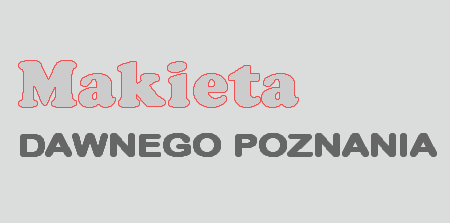 |
| ABOUT THE MODEL
|
|||||||||
|
|
The model shows Poznań as it was presented in Braun-Hogenberg's picture of 1618. Its central part is covered by a town located on the left bank of Warta river, in the circle of medieval walls. Additionally, you can see a miniature of Ostrów Tumski, so important in the history of Poznań and Poland, as well as miniatures of the following suburban villages: Chwaliszewo, Garbary, St. Martin and St. Adalbert. In the miniature of Poznań you can see how neatly the market was paved at the beginning of 17th century, how mighty were its battlements, churches built for the glory of God and the townhall - a testimony to the power and wealth of both the town and its citizens. Recorded and lasting half an hour commentary tells about former Poznań, the life of people living there and how the town has changed over ages. Lighting system lights up parts of the town that are just being talked about. Comparing the model with contemporary Poznań you can see buildings still existing (sometimes slightly altered, just like cathedral), but also the ones that do not exist anymore, i.e. the church of Maria Magdalena or castle of Przemysł. Miniature town is alive - a street near the market is jammed by a carriage waiting to be unloaded, a new house is just being constructed and an open shutter almost shivers with wind... Sometimes fires break out in town (which was quite common in former Poznań!), thunderlights of night storms light up the town covered with darkness and huge towers of its churches. Special materials very realistically imitate grass and sown fields of suburban villages as well as wild wine spreading on the walls of Przemysł's castle. Warta and Cybina rivers made of resin...just flow! Special effects are driven by a computer program adjusted to the needs. The model had been constructed for six years. The author preceded its construction with thorough studies in the history of former Poznań, its iconography as well as contemporary reconstructions. The model covers over 50 square meters. It consists of more than two thousand elements made of paper, modeline, plastic and materials used in contemporary model making. Each of them constitutes a few buildings, ie. Townhall and little shops or a quarter of tenement houses with yards covered with grass (St. Adalbert's hill does not fit in a passenger car!). An exception is the biggest, old church of St. Maria Magdalena with a tower that is half a meter tall, which makes a separate element. Solid foundation (that weighs more than 1 ton) on which the town is located, is made of plaster slabs. Underneath there is an empty space where the smoke is piped away imitating fires that were common in former Poznań. Scale 1:150 is the smallest in which models of towns are made in the world. A smaller one would not allow for showing most details, i.e. single bricks of church walls, sculped window frames, polichromies on the townhall or decorative details of architecture. And it is those details that make miniature Poznań look almost real. |
||||||||